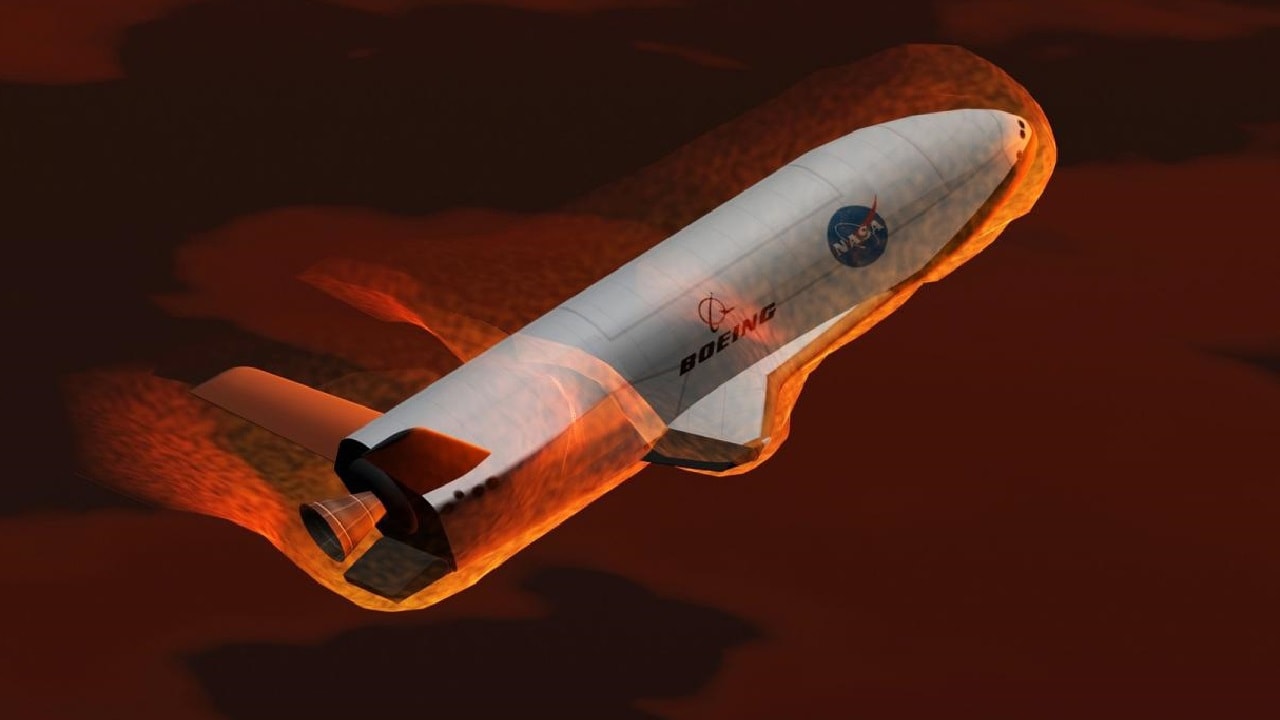In December, an unmanned space plane returned to Earth following a successful 908 days in orbit. The X-37B was developed by the Boeing Company for NASA and is currently operated by the Space Force.
While the spaceplane’s mission remains secretive, it has flown over one billion miles, serving as a test platform for new experiments and technologies.
The Design and Development of the Space Plane
The X-37B was built on lessons learned from the Space Shuttle program. Coming in at 29 feet long, approximately one-fourth the size of the space shuttle, this space plane uses similar lifting body aerodynamics to achieve full reusability.
Initially developed for NASA to test approach and landing profiles for space planes, the DoD took over the project in 2004. While NASA’s goal of an Orbital Vehicle never came to pass, the X-37B has proven highly successful as a robotic space vehicle.
While the Space Shuttle Program provided the initial impetus for developing the X-37B, most of its technologies came from the X-37A. This was NASA’s approach and landing vehicle used in atmospheric drop tests out of the Mojave Spaceport and Palmdale Regional Airport.
While there, it conducted eight flights.
Because its primary function was to test gliding and landing capabilities, it did not have a propulsion system and instead relied on the Scaled Composites White Knight to drop from high altitude.
The current iteration of the X-37B incorporates many technological advancements including all electro-mechanical flight controls, eliminating the need for flammable hydraulics, advanced avionics to automate de-orbit and landing, a lightweight composite structure, and novel materials designed to improve heat resistance.
What We Know About the X-37B’s Service in the Air Force
Since being taken over by the Air Force, the X-37B has flown six missions, labeled OTV-1 through -6.
While the purpose of each mission has been a tightly held secret, the Air Force has said that they have learned valuable lessons about reusable space plane technology.
Furthermore, each mission has hosted experiments from organizations such as the Naval Research Laboratory and NASA ranging from seeking to harness the power of microwaves to determining the effectiveness of different radiation shielding materials.
Each mission has also had a longer duration than its predecessor. Beginning at just 224 days for OTV-1, the latest mission, OTV-6 clocked in at an impressive 908 days, 21 hours, and 8 minutes. On OTV-6, the X-37B boasted a service module ring attached to the rear of the vehicle, increasing the number of experiments it was able to perform.
While it had to shed the ring in order to safely de-orbit and reenter the atmosphere, this represents another step forward in capability.
Additionally, it deployed FalconSat-8, a small satellite containing experiments designed by cadets at the U.S. Air Force Academy.
China and Russia Believe the X-37B is a Bomber
The X-37B’s secretive details have led U.S. adversaries to call it a weaponized “death star.” The director-general of a Russian defense technology company even claimed that the spaceplane could sport up to three nuclear warheads.” Although these grandiose claims are unfounded, the X-37B is undoubtedly enhancing the U.S. Space Force’s capabilities.
Maya Carlin is a Senior Editor with 19FortyFive. She is also an analyst with the Center for Security Policy and a former Anna Sobol Levy Fellow at IDC Herzliya in Israel. She has by-lines in many publications, including The National Interest, Jerusalem Post, and Times of Israel.
From 19FortyFive
Ukraine Footage Shows U.S. M982 ‘Excalibur’ Cut Through Russian Artillery
How To Sink A $3 Billion Dollar Submarine: Leave A Hatch Open
Smashed To Pieces: Video Shows Ukraine Hitting Russian Air Defenses

